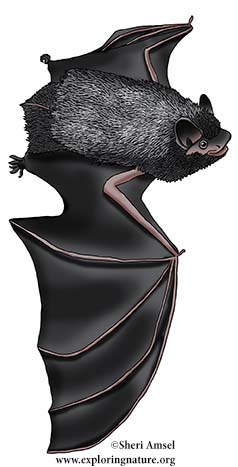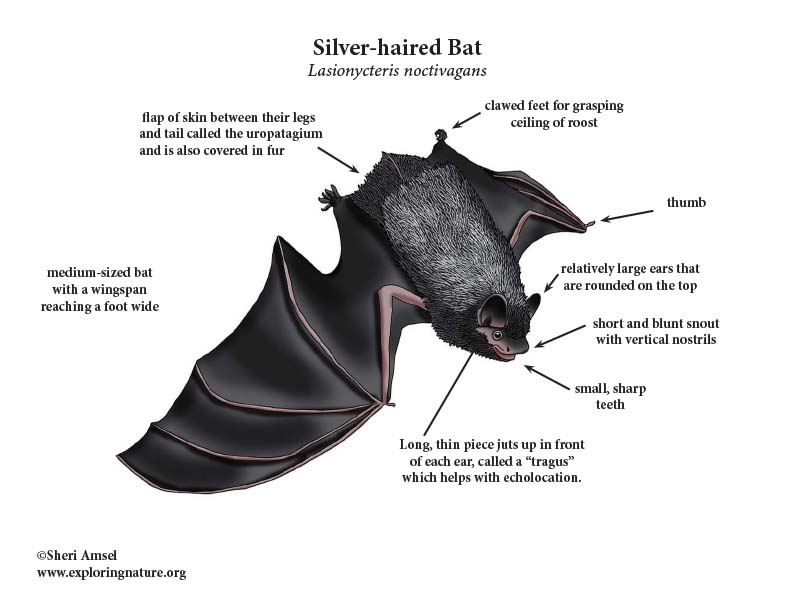

They are found from central Canada and southeast Alaska south through the US and dipping into eastern Mexico with a small population identified in Bermuda. They are not found in Florida or the southern coast of California.
Silver-haired bats live in coniferous and deciduous forests near water.
They are a black bat with frosted hairs on their back and belly. The top of the tail membrane (dorsum) is also covered in fur. The silver-haired bat is a medium-sized bat with a wingspan reaching a foot wide, but they still weigh less an a half ounce. They have relatively large ears that are rounded on the top.
This is a migrating species that summers as far north as southeastern Alaska and winters as far south as Mexico. They roost alone in tree cavities, but can also be found tucked behind the bark of dead trees - especially when traveling during migration. They do not form breeding colonies like some species, but will migrate in groups in the fall. They hibernate in their southern range in a warn, dry location from October until March.
They eat moths mostly, but will take other insects and spiders. They hunt flying low over open areas and the surface of water (lakes, pond, rivers, streams), flying relatively slowly in comparison to other bat species. They use echolocation to find prey.
They may be killed by owl and hawks when they are active at night.
Females are pregnant for 2 months (gestation) and give birth most often to two babies (pups) in early summer. They feed them milk (nursing) for about 5 weeks. Females do all the care of the young.
IUCN Red Listed as Least Concern.
Related Resources:
Coloring Page
Labeling Page
High Resolution Diagram
Kingdom: Animalia
Phylum: Chordata
Class: Mammalia
Order: Chiroptera
Family: Vespertilionidae
Genus: Lasionycteris
Species: L. noctivagans
When you research information you must cite the reference. Citing for websites is different from citing from books, magazines and periodicals. The style of citing shown here is from the MLA Style Citations (Modern Language Association).
When citing a WEBSITE the general format is as follows.
Author Last Name, First Name(s). "Title: Subtitle of Part of Web Page, if appropriate." Title: Subtitle: Section of Page if appropriate. Sponsoring/Publishing Agency, If Given. Additional significant descriptive information. Date of Electronic Publication or other Date, such as Last Updated. Day Month Year of access < URL >.
Amsel, Sheri. "Bat (Silver-haired)" Exploring Nature Educational Resource ©2005-2024. December 13, 2024
< http://www.exploringnature.org/db/view/Silver-haired-Bat >

